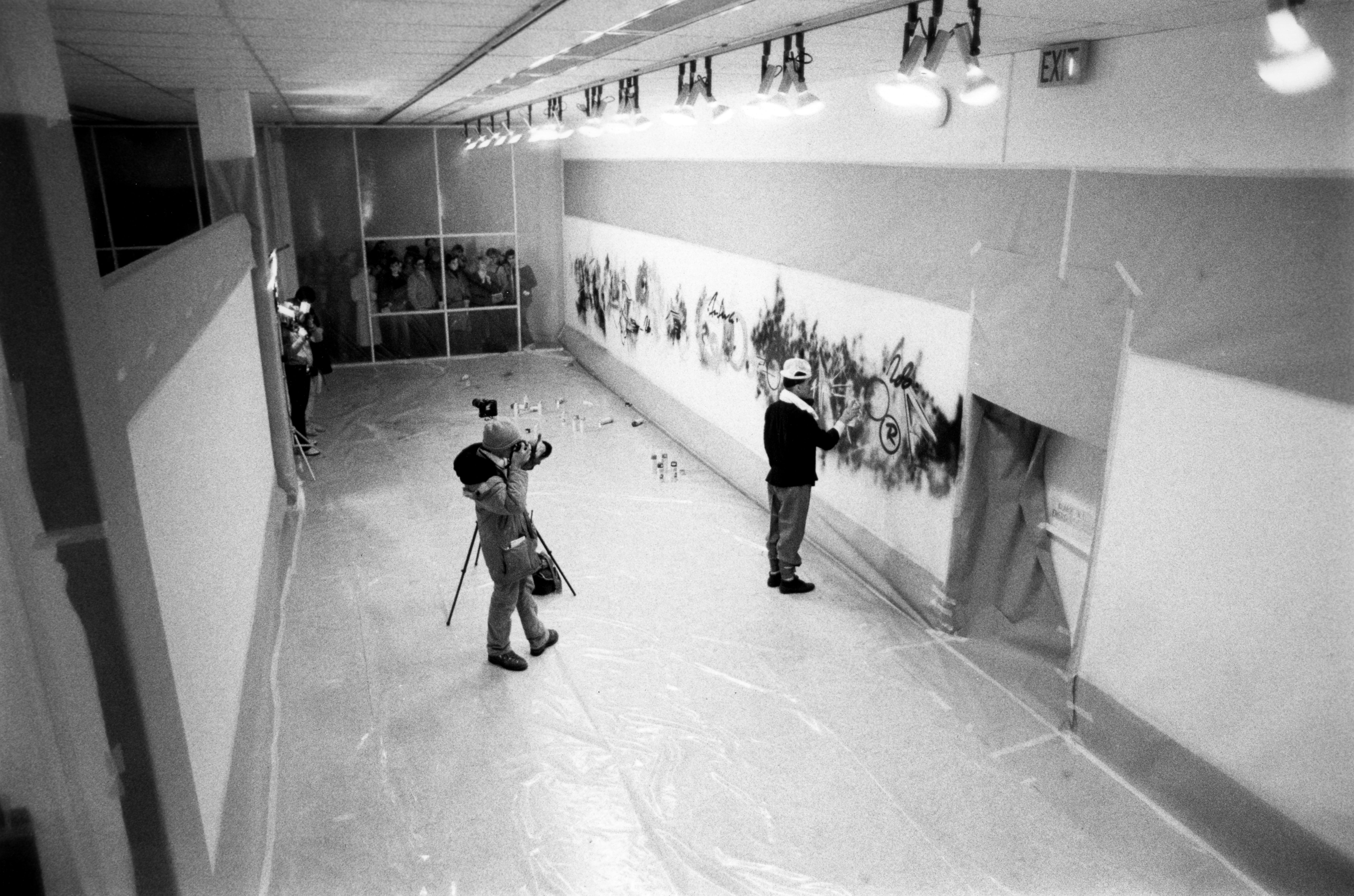
Works like “Untitled” (1984), created by American graffiti artist Futura2000, will be presented at “To Begin, Again,” an exhibition celebrating the prehistory of the Wexner Center for the Arts from 1968-1989. The exhibition will be on view Feb. 5-May 8. Credit: Courtesy of The Ohio State University Archives
In its newest exhibition, the Wexner Center for the Arts will reflect on art at Ohio State before the center was established.
“To Begin, Again: A Prehistory of the Wex, 1968-89” will be on view Saturday through May 8, displaying works that tell the story of contemporary art at Ohio State before the founding of the Wexner Center, according to the center’s website. The exhibition tells the story of how student activism paved the way for spaces dedicated to contemporary art at Ohio State.
Daniel Marcus, associate curator of exhibitions for the center, said before the 1960s, Ohio State was unique compared to other large institutions of its kind because it lacked an art collection. Through student protests and involvement, the University Gallery of Fine Art was founded in Hopkins Hall and directed by Betty Collings.
“The 1960s brought to OSU many of the same kind of national currents that drove the counterculture and the uprisings of the ‘60s across the country, and really around the world,” Marcus said.
“To Begin, Again” will feature work from groundbreaking artists of the time, such as Futura 2000, Eva Hesse, Adrian Piper, Sol LeWitt and Frank Stella, as well as art from Ohio State alumni, according to the Wexner Center’s website.
A goal of the exhibition is to narrate one of the histories of Ohio State prior to the establishment of the Wexner Center and bring archived works to light, Marcus said.
“Bringing the show to life has a lot to do with bringing back into view works that were maybe shown at OSU but not collected by the university,” Marcus said.
Student activism played a vital role in many of the pieces displayed, which “To Begin, Again” emphasizes, Arielle Irizarry, a curatorial intern at the center, said.
“The interest in the pre-history of the Wexner Center is really coming from this interest in how it is that the art that the university eventually acquired really speaks to activism of the past and student involvement,” Irizarry said.
Student activism is what inspired many of the exhibitions put on by Jonathan Green, founding director of the Wexner Center, which covered controversial topics such as the AIDS epidemic and sexual assault, Irizarry said.
“They’re all really contemporary forms of art and pushing the boundaries of either social, or formal, or artistic qualities,” Irizarry said.
Marcus and Irizarry said “To Begin, Again” is relevant now more than ever as student activism has played a prominent role in movements such as Black Lives Matter and climate justice. The protests of the 1960s and 2020 inspired the idea for a show that looks back at Ohio State’s history and draws a comparison to the present, according to the Wexner Center’s website.
“It connected to contemporary struggles and really kind of drew a line between student organizing of the past and some of the student organizing we’ve seen in the past few years and social protests we’ve seen in the last few years,” Irizarry said.
The exhibition is able to speak to students currently enrolled at Ohio State, as well as nationwide, Marcus said.
“It’s a history in which students have a voice and a history in which activists have a voice. And it’s history that I think matters for us now more than ever,” Marcus said.
Admission to the exhibition will be free to students with a valid ID and $9 to the general public.


